Forgotten Realms is a campaign setting for the Dungeons & Dragons (D&D) fantasy role-playing game. Commonly referred to by players and game designers as "The Realms", it was created by game designer Ed Greenwood around 1967 as a setting for his childhood stories. Several years later, it was published for the D&D game as a series of magazine articles, and the first Realms game products were released in 1987. Role-playing game products have been produced for the setting ever since, in addition to novels, role-playing video game adaptations, comic books, and the film Dungeons & Dragons: Honor Among Thieves.

Spelljammer is a campaign setting originally published for the Advanced Dungeons & Dragons role-playing game, which features a fantastic outer space environment. Subsequent editions have included Spelljammer content; a Dungeons & Dragons 5th edition setting update was released on August 16, 2022.

Ed Greenwood is a Canadian fantasy writer and the original creator of the Forgotten Realms game world. He began writing articles about the Forgotten Realms for Dragon magazine beginning in 1979, and subsequently sold the rights to the setting to TSR, the creators of the Dungeons & Dragons roleplaying game, in 1986. He has written many Forgotten Realms novels, as well as numerous articles and D&D game supplement books.
Faerûn is a fictional continent and the primary setting of the Dungeons & Dragons world of Forgotten Realms. It is described in detail in several editions of the Forgotten Realms Campaign Setting with the most recent being the 5th edition from Wizards of the Coast, and various locales and aspects are described in more depth in separate campaign setting books. Around a hundred novels, several computer and video games and a film use Faerûn as the setting.
Abeir-Toril is the fictional planet that makes up the Forgotten RealmsDungeons & Dragons campaign setting, as well as the Al-Qadim and Maztica campaign settings, and the 1st edition version of the Oriental Adventures campaign setting.
Neverwinter is a fictional city-state in the Forgotten Realms campaign setting for the Dungeons & Dragons fantasy role-playing game. Neverwinter was founded by Lord Halueth Never. It sits on the northwestern coast of the subcontinent of Faerûn.

The Forgotten Realms Campaign Setting is a role-playing game sourcebook first published by TSR in 1987 for the first edition of the fantasy role-playing game Advanced Dungeons & Dragons that describes the campaign setting of the Forgotten Realms. It contains information on characters, locations and history. Various revised and updated editions have been produced over the years.
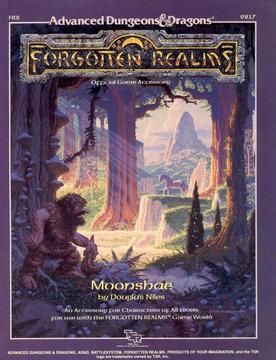
Moonshae is an accessory for the Dungeons & DragonsForgotten Realms campaign setting. It describes the Moonshae Isles of Faerûn.
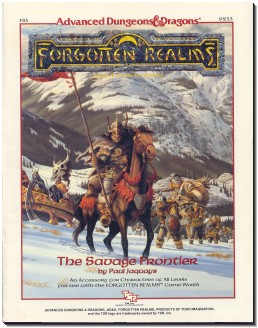
The Savage Frontier is an accessory for the Dungeons & Dragons campaign setting Forgotten Realms. It describes the Savage Frontier of Faerûn. The book was written by Jennell Jaquays and published by TSR in 1988. Cover art is by Larry Elmore, with interior illustrations by Esteban Maroto, and cartography by Dave Sutherland, Dennis Kauth, and Jaquays.
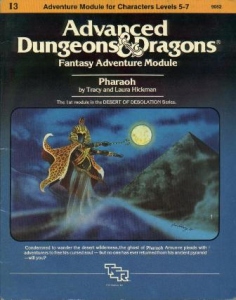
Desert of Desolation is a compilation adventure module published by TSR for the Dungeons & Dragons (D&D) fantasy roleplaying game. It combines three previously published individual modules: Pharaoh, Oasis of the White Palm, and Lost Tomb of Martek. The modules were made for use with the first edition Advanced Dungeons & Dragons (AD&D) rules. Pharaoh was created by Tracy and Laura Hickman soon after the couple married in 1977, and published by TSR in 1982. Oasis of the White Palm was a collaboration between Tracy Hickman and Philip Meyers, and Hickman wrote the Lost Tomb of Martek on his own; both were printed in 1983.

The Ruins of Undermountain is a boxed set for the Forgotten Realms campaign setting for the second edition of the Advanced Dungeons & Dragons fantasy role-playing game. The set was written by Ed Greenwood and published by TSR. It featured box cover art by Brom. and was published in 1991.

Hall of Heroes is an accessory for the Forgotten Realms campaign setting for the second edition of the Advanced Dungeons & Dragons fantasy role-playing game. The 128-page book, with product code TSR 9252, was published in 1989, with cover art by Jeff Easley and interior art by Ned Dameron.
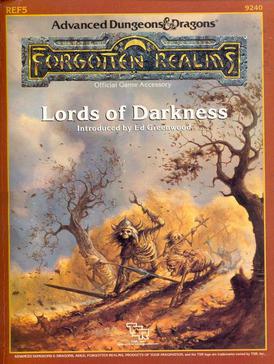
Lords of Darkness is the name of two accessories for the fictional Forgotten Realms campaign setting for the Dungeons & Dragons fantasy role-playing game.

Empires of the Sands is an accessory for the fictional Forgotten Realms campaign setting for the first edition of the Advanced Dungeons & Dragons fantasy role-playing game. The book was published in 1988 and written by Scott Haring, with cover and interior art by Jeff Easley.
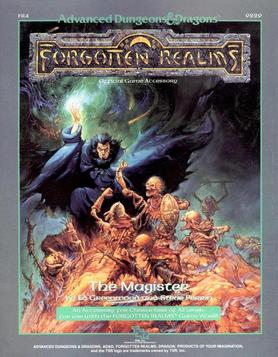
The Magister is an accessory for the Forgotten Realms campaign setting of the first edition Advanced Dungeons & Dragons fantasy role-playing game. The book, with product code TSR 9229, was published in 1988 by TSR. It was written by Ed Greenwood and Steve Perrin, with cover art by Jeff Easley and interior art by Valerie Valusek.

Lankhmar – City of Adventure is an accessory for the Dungeons & Dragons fantasy role-playing game, first published by TSR in 1985.

City System is an accessory for the Advanced Dungeons & Dragons fantasy role-playing game. It was written by Jeff Grubb and Ed Greenwood, and published in 1988 by TSR. It includes extensive and detailed maps of the city of Waterdeep, and was intended to serve as a companion to Waterdeep and the North. The sheer expanse of the maps drew praise from Ken Rolston of Dragon magazine, although he criticized their lack of personality and utility.
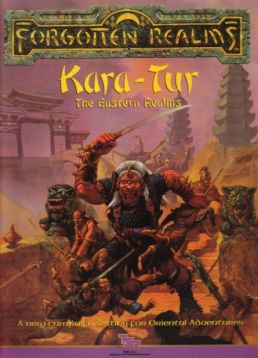
Kara-Tur: The Eastern Realms is an accessory and campaign setting for the Advanced Dungeons & Dragons fantasy role-playing game.
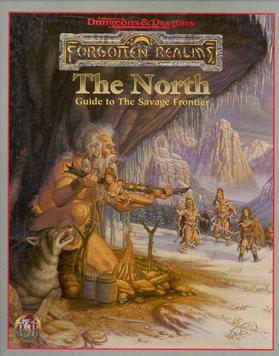
The North: Guide to the Savage Frontier is an accessory for the 2nd edition of the Advanced Dungeons & Dragons fantasy role-playing game, published in 1996.















